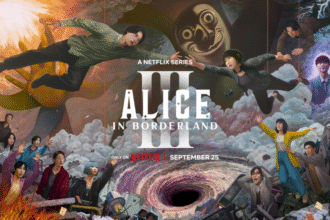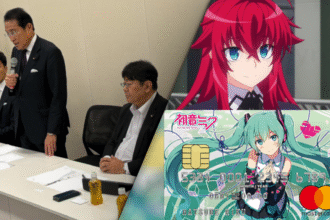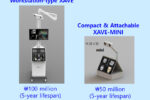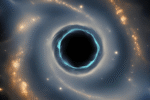
By the time The Matrix Reloaded reaches its climax, Neo’s role as “The One” has been thoroughly tested. The film’s second half builds toward the much-debated Architect scene, an encounter that puts Neo face-to-face with the creator of the Matrix system.
Leading up to this, Neo struggles to balance his love for Trinity with his mission to save humanity from extinction. His nightmares of her dying in the Matrix become a foreshadowing tool, weighing heavily on his decisions.
Neo, alongside Morpheus and Trinity, has been following the Oracle’s cryptic guidance, which leads them through high-speed chases, the iconic freeway battle, and confrontations with the relentless Agents.
The Oracle emphasizes that choices define who people truly are and that even Neo’s role as The One is shaped by choice rather than predestination. By the time Neo reaches the Source, the film has set up its central philosophical duel: free will against determinism.
Also Read: Elemental Ending Explained: Love Defies Boundaries of Fire and Water
The Architect Scene: The Heart of the Ending Explained
The pivotal moment arrives when Neo meets the Architect, a cold and emotionless program who claims to be the creator of the Matrix.
The dialogue between them is complex, packed with philosophical references and deliberately confusing layers. But at its core, the Architect delivers a revelation that shatters Neo’s understanding of his purpose.
The Architect explains that Neo is not the first “One.” In fact, the Matrix has gone through multiple versions, and each cycle has required a chosen figure who eventually discovers the truth and returns to “reboot” the system.
The purpose of the One, according to the Architect, is not to liberate humanity but to play a role in keeping the Matrix functioning. The Matrix is inherently unstable, and human choice introduces chaos. The system balances this instability through the creation of “The One,” a form of controlled anomaly.
Neo is given a stark choice. He can take the standard path, like his predecessors, and return to the Source. This decision would reboot the Matrix and allow Zion to be destroyed and rebuilt again, preserving humanity on a limited scale but maintaining the system’s endless cycle.
Or, Neo can take the other door, reject the system’s planned design, and try to save Trinity, who at that very moment is falling to her death in the Matrix. The second path, the Architect warns, is catastrophic; it threatens not only Zion but also the delicate balance sustaining humanity and the machines.
This choice crystallizes the film’s central theme: love versus duty, individuality versus systemic control. Unlike his predecessors, Neo chooses to save Trinity because his love for her overrides the Architect’s cold determinism. That decision fundamentally breaks the system’s cycle, setting the stage for The Matrix Revolutions.
Trinity’s Fall and Neo’s Defiance
As foreshadowed by his visions, Trinity is shot while falling through the air during a fight in the Matrix. Neo arrives in time to catch her before she can hit the ground, but she collapses in his arms, mortally wounded.
Refusing to accept fate, Neo uses his powers as the One on a deeper level than before. He reaches into her body, removes the bullet fragments, and revives her heartbeat, essentially bringing her back to life.
This sequence represents the culmination of Neo’s defiance against the predetermined system. His predecessors had chosen the logical path of preserving the cycle. Neo, instead, rejects destiny and reasserts the power of human emotion, proving that love and free will can bend even the cold design of the Matrix.
His choice ensures that the Matrix will not simply reboot again; it forces both machines and humans into a new direction filled with uncertainty.
The Final Cliffhanger: Neo’s Power Beyond the Matrix
The ending doesn’t stop there. After saving Trinity, Neo and his crew return to the real world. Machines attack their ship, and during the chaos, Neo suddenly discovers he can affect the machines outside the Matrix.
He raises his hand, and the attacking sentinels are destroyed, but he collapses from the effort. This moment introduces a startling twist: Neo’s power somehow transcends the simulated world of the Matrix, suggesting his connection to the system is deeper than anyone expected.
This cliffhanger blurs the line between machine and human realities. Is Neo directly linked to the Source itself, even in the real world? Or has the concept of control and connection expanded beyond the Matrix?
These questions were deliberately left unresolved at the end of The Matrix Reloaded, urging audiences to question whether reality itself is another layer of control.
Thematic Breakdown: Choice, Control, and Destiny
1. Free Will vs. Systemic Design: The Architect represents determinism and cold logic, insisting that the Matrix must operate as a cycle with carefully managed anomalies. Neo’s decision to save Trinity directly rejects this view and demonstrates the film’s central theme: human choice can break cycles, even if the price is unpredictable consequences.

2. Love as Resistance: Unlike previous Ones, Neo is motivated not by abstract duty but by love. This demonstrates the film’s argument that human emotions can stand as forces stronger than systemic control. The act of reviving Trinity is both personal and symbolic, showing that the human spirit contains power machines cannot predict or override.
3. Breaking the Cycle of Zion: One of the most jaw-dropping revelations is that Zion itself has been destroyed multiple times, rebuilt in cycles controlled by the machines.
Neo’s refusal to follow the Architect’s plan means that this cycle is about to be disrupted. The survival of humanity now rests not on a controlled reset but on an unprecedented rebellion against the system.
4. Neo’s Expanded Powers: The destruction of the Sentinels in the real world hints that the boundaries between digital and physical realities are not as clear as believed. Neo’s powers are no longer confined to the simulation, which radically reshapes the story’s stakes and expectations.
Why the Ending Resonates
The ending of The Matrix Reloaded leaves audiences with more questions than answers, but that is precisely why it has remained so heavily debated.
Instead of giving a resolution, it throws the philosophical dilemmas of free will, destiny, love, and control into sharper focus. Neo’s decision breaks the machine’s calculated design and sets a precedent that emotional, irrational, and deeply human choices have their own kind of unstoppable power.
The cliffhanger reinforces this uncertainty. Humanity’s survival, the future of Zion, and Neo’s newfound powers all remain unresolved, pushing viewers to question the very nature of reality.
This tension between determinism and freedom, between the cold system and the messy unpredictability of human choice, is what gives the ending its lasting impact.
Also Read: Kung Fu Panda 3 Ending Explained: Po Becomes True Master








